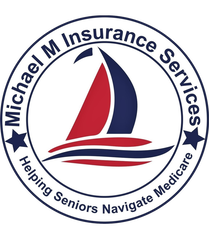If you’ve recently received a letter notifying you of a double-digit increase in your Medicare
Supplement premium, you’re not alone. Many individuals 65 and over are facing higher costs for
the same coverage they’ve relied on for years.
If you’re happy with your current plan, this article is not here to convince you to change. In fact, if your plan is still working well for your needs and your premium is manageable, there’s likely no reason to switch. But if you’ve started feeling the pinch from rising costs, you may be wondering:
“Are there any other good options that still give me solid coverage — without the high monthly premium?”
The answer is yes — and one option that often gets overlooked is the Medicare Supplement
High Deductible Plan G.
Why People Choose Traditional Plan G
Let’s start with what you already know. Medicare Supplement Plan G is popular because it’s simple, predictable, and comprehensive. It covers nearly all out-of-pocket costs that Original Medicare doesn’t pay — including copays, coinsurance, and hospital deductibles.
The trade-off? You pay a higher monthly premium for that predictable peace of mind.
For example, in New York and surrounding areas, the average Plan G premium for a 70-year-old can run around $326 per month , or about $3,912 per year. And with recent letters announcing double-digit rate increases, that number is only going up for many.
What is High Deductible Plan G?
High Deductible Plan G (HDG) is exactly what it sounds like — it offers the same core benefits
as regular Plan G, but with a much lower premium and a higher annual deductible. In 2025,
that deductible is $2,800.
Here’s how it works:
- You pay a low monthly premium (typically around $72/month or $864/year)
- You pay for Medicare-approved services out-of-pocket until you hit the $2,800 deductible
- After that, the plan pays 100% of approved costs — just like regular Plan G
It’s a way to keep your safety net intact without paying top dollar each month.
When High Deductible Plan G Might Make Sense
Let’s walk through two common scenarios to help you understand where HDG may be a smart fit.
1. Average Health Year
You’re seeing your primary doctor a couple times a year, maybe a specialist or two, and had an
MRI done.
Plan Cost Comparison
| Service | Traditional Plan G | High Deductible Plan |
|---|---|---|
| 2 PCP Visits | $0 | $18 |
| 4 Specialist Visits | $0 | $52 |
| 1 MRI | $0 | $100 |
| Annual Premium | $3,912 | $864 |
| Total Cost | $3,912 | $1,034 |
Savings with HDG in an average year: nearly $2,900
2. Health Issues Year
You’ve been admitted to the hospital once, seen multiple specialists, and needed several scans.
Plan Cost Comparison
| Service | Traditional Plan G | High Deductible Plan G |
|---|---|---|
| 4 PCP Visits | $0 | $36 |
| 10 Specialist Visits | $0 | $130 |
| 2 MRIs | $0 | $200 |
| 1 CT Scan | $0 | $30 |
| 1 Hospital Stay | $0 | $1,676 (deductible) |
| Annual Premium | $3,912 | $864 |
| Total Cost | $3,912 | $2,936 |
Even in a difficult year, HDG can still save over $900
Is It Right for You?
High Deductible Plan G isn’t for everyone. If you’re managing chronic conditions, have frequent
hospital visits, or simply prefer a “pay nothing when I need care” approach, then sticking with
your current Plan G may be the better choice — even with a higher premium.
But if:
- You’re in relatively good health
- You rarely go to the doctor
- You’re financially prepared to handle some out-of-pocket costs
- And your premiums are rising fast…
…then it may be time to explore alternatives like High Deductible Plan G.
A Word of Caution: Don’t Switch Just to Save
Switching plans just to save money without looking at your actual needs can lead to regret.
Always consider:
- Your current health conditions
- Your prescription needs
- Your doctor network
- How much you’re willing (and able) to pay upfront if something happens
If you’re satisfied with your current plan, stay put. There’s no reason to fix what isn’t
broken.
But if rising premiums are causing you to reconsider, know that you’re not alone — and you do have options.
Need Help Understanding Your Medicare Supplement Options?
Making sense of plan comparisons, deductibles, and copays can be overwhelming. That’s why I
created a simple side-by-side visual comparison of Plan G vs. High Deductible Plan G ,
which you can download here as a PDF or request directly from me.
If you’re curious whether a change might make sense for you — or if you just want to better
understand your current coverage — I’m happy to help.
- Call me at 631-774-3786
- Email: mmilinsurance@gmail.com
- Visit: MyMedicareMike.com
There’s never a cost to talk, and no pressure to change. I’m just here to make Medicare a little
easier to understand.
FAQs
Why is the Premium of the High Deductible Plan G so much less than the regular Plan G?
Because of a Deductible you may or may not have to pay.
Does the Globe Supplement Plan include Rx coverage?
No, none of the supplements have Rx Coverage. A standalone Part D Rx plan must be added.

